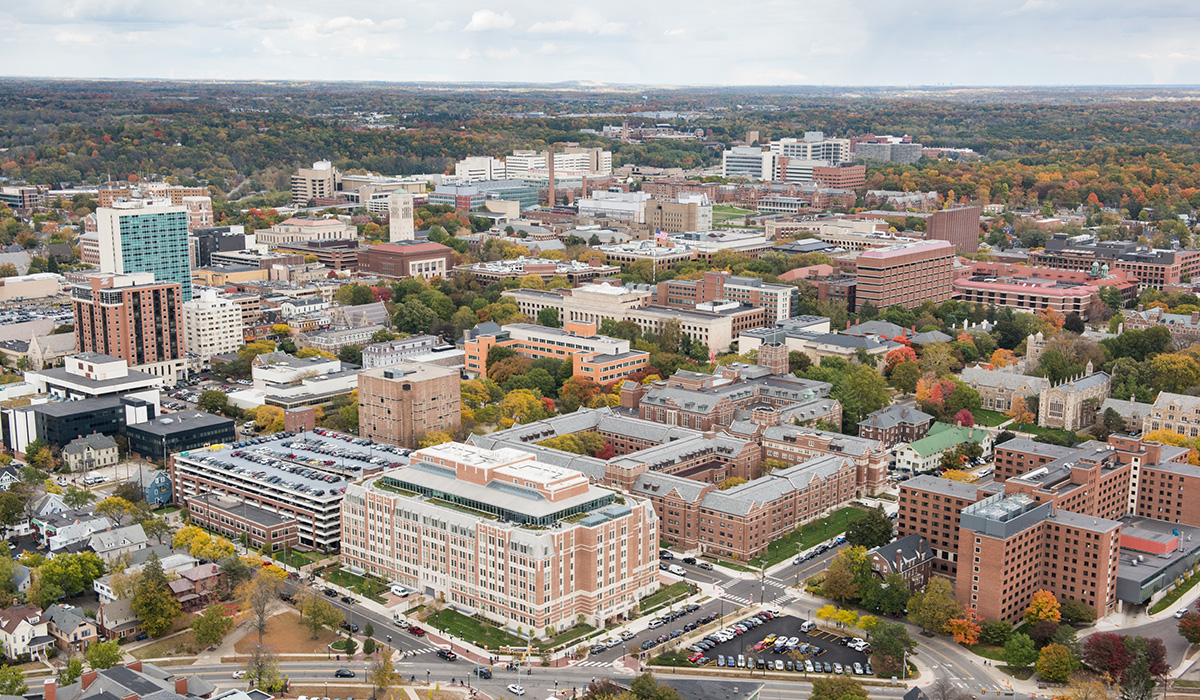Aug. 25-29 saw a change on campus as students moved into residence halls in anticipation of the fall term. The summer solitude was coming to an end, and while much seemed normal, some COVID-related policies were firmly in place as of the Aug. 30 start of classes.
Vaccination requirement: U-M announced on July 30 that all students, faculty, and staff on all three campuses are required to be vaccinated against COVID-19 and submit their vaccination information before the start of the fall term. The requirement applies to those working remotely and allows for limited medical or religious exemptions.
- The announcement came as the rate of COVID-19 infections increased across the country as the delta variant proved to be much more infectious.
- There was strong internal support for a vaccine mandate from Central Student Government, Rackham Student Government, deans of the schools and colleges, a Senate Advisory Committee on University Affairs resolution, and a survey of U-M faculty.
- Those individuals who request and are approved for a medical or religious exemption are required to complete mandatory weekly COVID-19 testing.
- Beginning Aug. 9, the University made advisers available to students, faculty, and staff who have questions about the vaccine, its safety, or the importance of being vaccinated. Advisers do not offer medical advice or address any issues related to human resources or University policy.
We’re continuing to prepare for a fall semester that has more than 93 percent of Ann Arbor classes in person, residence halls at nearly full capacity, athletic and cultural events with fans and patrons, and outstanding in-person experiences for our students.”
—U-M President Mark Schlissel in an Aug. 9 letter to the U-M community
Face covering requirement: Effective Aug. 11, the University again required the use of face coverings inside campus buildings and transit, regardless of vaccination status. Earlier in the summer, the requirement was lifted for those who had been fully vaccinated and self-reported their vaccine information. The University cited increasing case transmission due to the delta variant for reinstituting the requirement, which would be in place for at least the first weeks of the fall semester.
- The policy requires all students, staff, faculty, and visitors to wear a face covering over the mouth and nose when indoors on U-M property (including all three campuses as well as UM-controlled properties off campus) and U-M transit.
- According to an Aug. 9 message from U-M President Mark Schlissel, there are “limited exceptions, which include actively eating and drinking, while alone with the door closed in an enclosed office, and being in your own residence hall, including common areas.”
- The requirement extends to indoor spaces at home athletic events, such as restrooms, locker rooms, and press boxes. In Michigan Stadium, staff in all indoor areas as well as outdoor concession areas are also required to wear face coverings. Athletics anticipates the policy to last throughout the fall sports season.
Campus buses: The University continues to run the routes that it developed earlier in the pandemic. The transportation office worked with faculty and staff at the College of Engineering last year to make sure that most trips are shorter for most riders. Preventive measures that remain in place include:
- Required face coverings
- Transit routes to be completed in approximately 15 minutes or less
- Moveable shields installed as a barrier between passengers and drivers
- Drivers taking advantage of stops to open doors for increased ventilation
- Increased air filtration and open windows for all buses
- Cleaning and disinfection protocols for frequently touched surfaces inside the bus
Financial assistance: The Office of Financial Aid announced it would accept student applications for emergency assistance. According to the University Record, students can access federal money to help cover costs related to housing, food, books and supplies, technology, health care, child care, and other needs.
- U-M received $25.2 million from the Higher Education Emergency Relief Fund (HEERF), part of the March 2020 Coronavirus Aid, Relief, and Economic Security Act. Of that amount, half went to emergency grants for students. An additional $5.2 million in funds came from the financial aid office, the development office, schools and colleges, and other units.
- Another round of federal relief approved in December 2020 provided $12.6 million (HEERF II).
- The round of funding available through the current student application (HEERF III) comes from the American Rescue Plan, approved in March 2021.
As of Aug. 29, the following on the Ann Arbor campus had self-reported as fully vaccinated:





